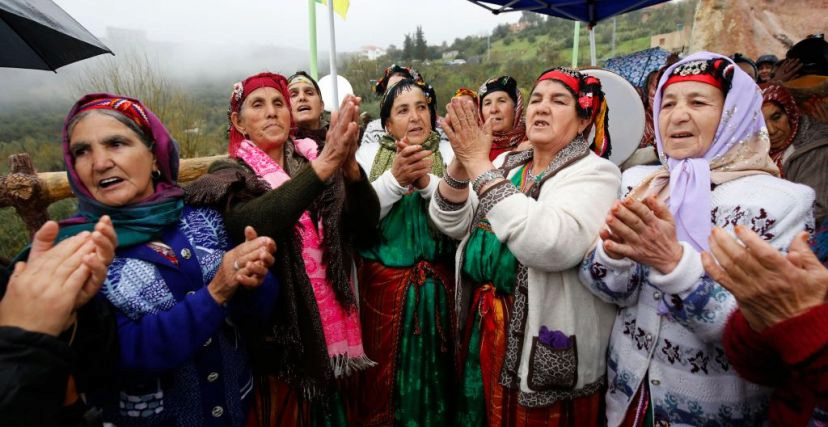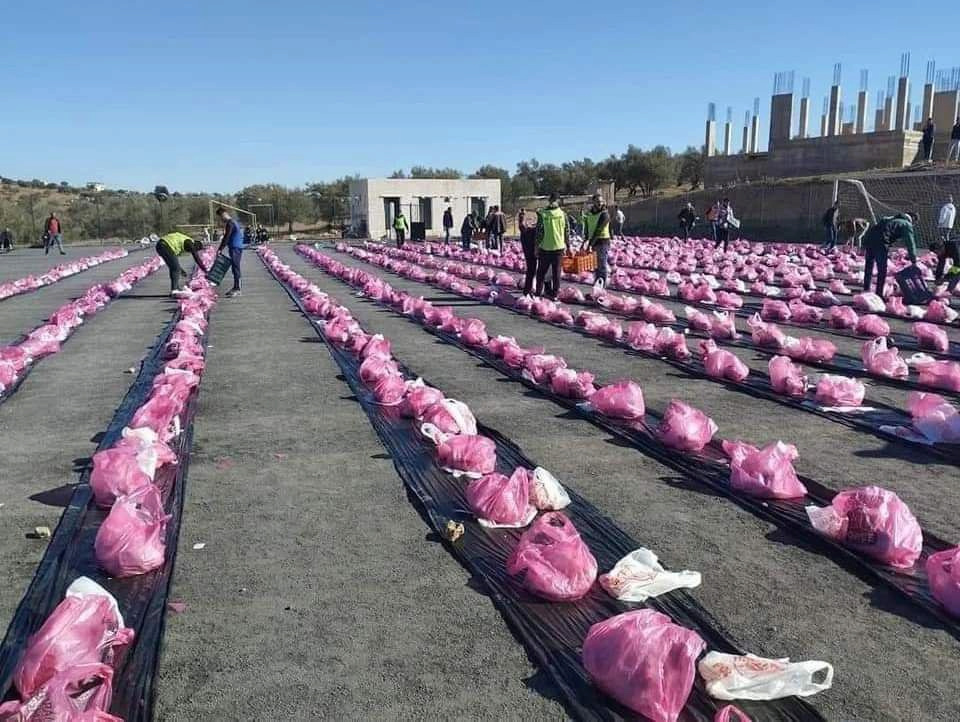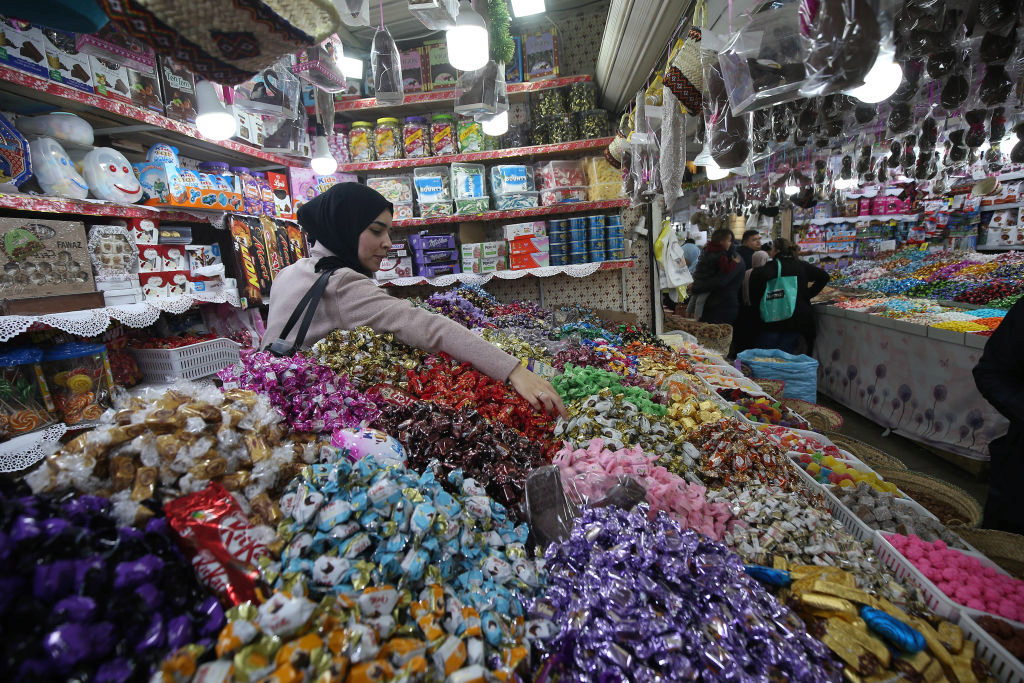?5Algerian rituals to celebrate yanaier"January"... What are they

"ASHWEEQ" IS A SINGING CUSTOM TO WELCOME» yanaier" JANUARY IN THE KABYLIE REGION
When the sun rises on the twelfth of January, this is considered an announcement of the beginning of a day dedicated to joy, as it is for Algerians the beginning of the New Year in the Amazigh calendar, a day associated with many legends and stories, there are those who link it to the agricultural season, while others refer it to the memory of King Sheshnaq’s victory in his war In Egypt, however, the common denominator is that "January" is a family holiday par excellence.
Algerians receive January "Yanaier" with ancient rituals and try to send them through the new generations to preserve them
The way Algerians celebrate this day differs, according to the customs and traditions of the country across its four regions. Here we summarize the five most important rituals to celebrate the Amazigh New Year.

The women of the Kabylie region receive January "Yanaier" with collective singing circles
Isqas Amqaz
On the day of the celebration of January, the phrase “Isqas Amqaz” is repeated and heard wherever you turn your face, even by Algerians who do not speak Amazigh, and it is a phrase that is synonymous in the Arabic language with “Happy Year”, and it is the official greeting for the feast, which officially tomorrow after it was approved by the late President Abdelaziz Bouteflika in 2018.
This phrase also bears in its folds, optimism that the year will be a year of goodness and blessing, a year in which rain falls and crops grow, so the new year is greeted with singing, dancing and chants, especially by women in the tribal region, where women's convoys walk through the narrow village roads, shooting from their throats. Happy day songs.
Delicious food and a country rooster
In most Algerian homes, families prepare a special dish for the January"Yanaier" dinner. In the Kabylie region, some families prefer to sacrifice my rooster to decorate the dinner table, while the housewife puts boiled eggs on top of the couscous, so that the year is as bright as couscous and eggs, while another family chooses to prepare "couscous." The Seven Grains" is couscous whose broth is prepared using seven types of grains and legumes.

The dish "Sharchem" is famous for the city of Setif in the celebrations of the Amazigh New Year "yanaier"
In the region of Setif, in the east of the country, the dish "Cherchem" or "Erkmen" is prepared, which are all names for a dish known since ancient times, prepared from grains and legumes. Families receive it on several occasions, especially "Yanaier". Or when the "weave" poles are erected to weave carpets and some traditional coverings.
While other families prefer to prepare on the night of "Yanaier" dishes of "rashta" with chicken meat, shakhshoukh, tarida, or other traditional dishes, as everyone encourages that the Yanaier dinner be special.

Meat "Wazia" is distributed to the needy and the poor in the Kabylie region
Al-Wazia.. meat for all people
The distribution may be among the biggest manifestations of welcoming the new year, so the residents of cities and villages organize this ancient habit to revive the “Yanaier” occasion, so people are appointed to go to the market in order to choose the best calves, after their price has been secured by the participants, volunteers and philanthropists. .
On the promised day, the organizers and participants gather in a known place to slaughter those calves, and everyone participates in the process.
Each group is assigned a specific task. One group performs the slaughter, another cuts, and another cleans. After all, the meat is distributed to the participants, with allocating rations for the poor and needy.

"Airad" is a festive carnival that is famous for in the Beni Senus region in Tlemcen, western Algeria
carnival "airad"
The "Airad" carnival is one of the customs and rituals that are inherited by generations in the Beni Senus region, in the state of Tlemcen, adjacent to the western borders, to celebrate the arrival of the Amazigh New Year, an old habit that struggles to survive amid the momentum of modernity.
The history of this carnival , which is famous for the city of Bani Senus, dates back to 1250 BC, and it bears several names and ceremonial rituals.
The word "airad" means the lion, which is a symbol of strength, and the story of this unique carnival is based on the manufacture of animal masks by Bani Senus youth several days before the celebration of the Amazigh year, and they wear them to demonstrate on the night of "Yanaier".
The process is just a dramatic representation that does not carry rituals or religious rituals, but the Salafi-Wahhabi sheikhs gave it a religious character and started issuing extremist fatwas according to their whim and limited cultural level.

"Al-Traz" mix of sweets and nuts in the Algerian market
" Al-Taraz" for adults and children
In the days before "Yanaier", the trade in sweets, nuts and dry fruits flourishes. All families unanimously agreed that the after-dinner dessert should be a dish made up of the finest types of nuts, which is called "Traz", which is a mixture of almonds, walnuts, hazelnuts, sweets and other ingredients.
In areas in the west of the country, families prepare a large dish made of "dom" and fill it with nuts, sweets, and dried fruits to be placed in the middle of the dining table, so that a share of these nuts is distributed to each member of the family by an elderly person in the family or a mother who is keen on Give each child a share of nuts and sweets inside a bag.
In other areas, an empty dish is placed in the middle of the house, so that the youngest member of the family is placed inside it, and “taraz” is poured over his head, which is a good omen that blessings fall on him and his family, such as nuts and sweets.
Source : websites

